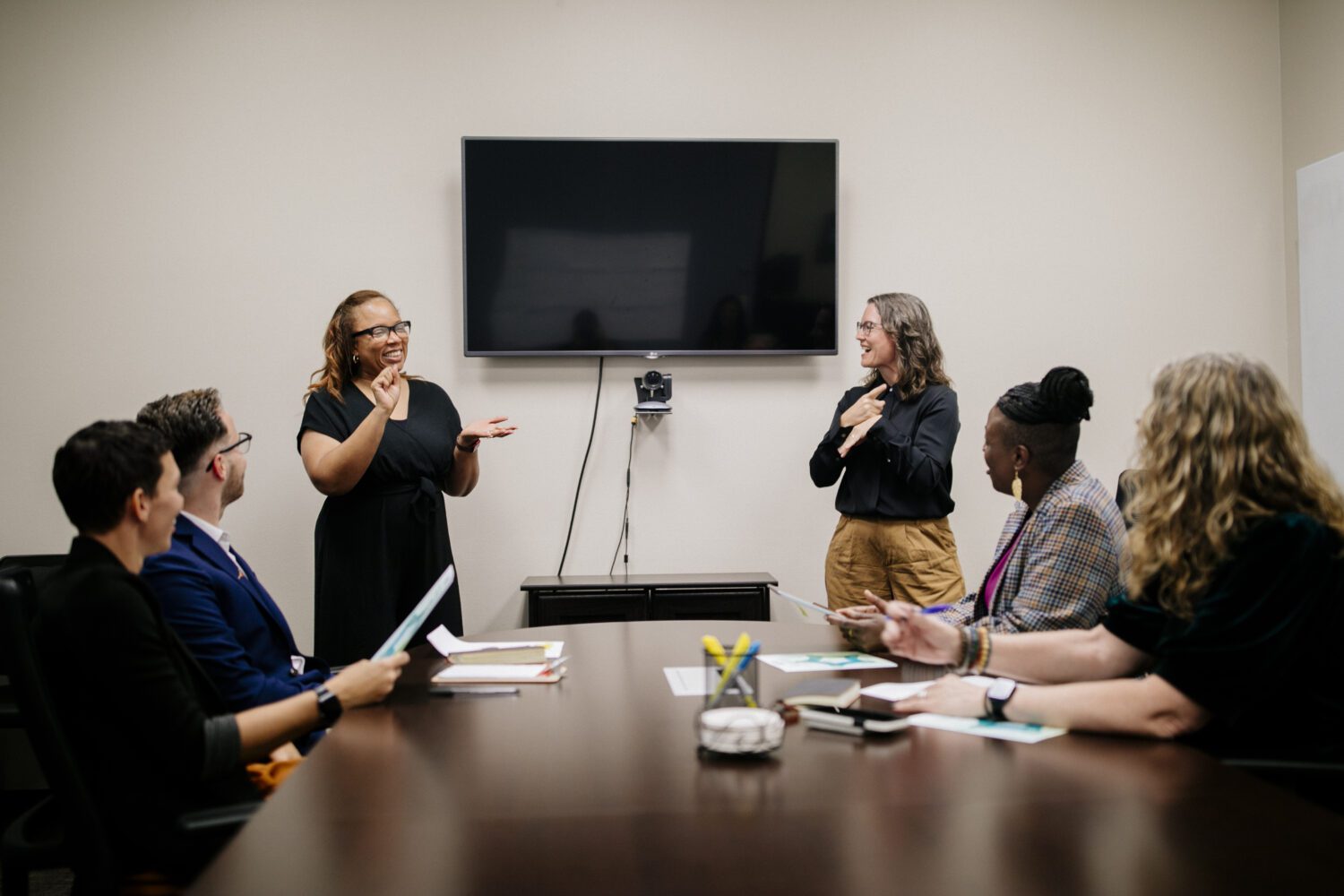[video:https://youtu.be/8Qr9RHOidV4]
Coretta Scott King once said, “The greatness of a community is most accurately measured by the compassionate actions of its members.” By this measure, the parents of deaf children who make up the organization Hands & Voices (H&V) certainly help make their community great.
It’s in that spirit of community that the National Deaf Center on Postsecondary Outcomes (NDC) spoke with Lisa Kovacs, director of programs and FL3 Center director, and Candace Lindow-Davies, director of outreach, from Hands & Voices to tell us more about the work they do.
Empowering Deaf People and Their Families Through Community
At the center of every program, chapter, and service that H&V provides, you’ll find parents who have stepped up to create change and empower their deaf children.
“It’s all about coming together with that common lived experience of being parents of children who are deaf or hard of hearing and being a place where everyone feels welcome,” said Lindow-Davies.
With forty-one chapters in the US, two in Canada, and one in Kenya that all serve families from birth to the exit of school, H&V has certainly found many parents ready to come together to empower their children, and each other, for success.
Training Parents and Deaf Youth to be Advocates
Hands & Voices has developed a series of services and resources focused on training parents to become advocates for themselves, their children, and other families with deaf children. The goal is to provide support and training to parents, so families can be confident in their ability to fully engage in their child’s education. The ultimate goal is for the child to become their own advocate.
“Parents are modeling for their kids,” explained Kovacs. “Kids can see parents in an individualized education program (IEP) meeting, for example, when they’re in first grade and see that they are advocating for them. Eventually, you have students that are in third and fourth grade who are doing PowerPoints for their own IEP meeting. It’s really fantastic. Then, when they hit transition age, advocating for themselves is a no-brainer to them because they’ve been doing it for so long.”
This goal of creating advocates and empowering deaf youth through family support can be seen in all of their programs and services. Many of these programs are active this summer and can assist parents of deaf youth with transitioning through COVID-related adjustments.
- Guide By Your Side trains family leaders and deaf leaders to provide direct support to families who have just learned of their child’s identification as deaf or hard of hearing. This program includes Parent Guides and Deaf Guides, who may or may not be parents themselves, who share their lived experience being deaf or hard of hearing.
- Leadership-to-Leadership develops parent leaders by enhancing their own natural ability with learned skill development through formal and informal learning opportunities.
- ASTra – Advocacy, Support, and Training includes a deaf-specific educational advocacy curriculum which trains family members and professionals who seek the opportunity to increase their knowledge and skills to advocate for their own child or a student they work with.
- The Military Project includes trained family leaders from all five branches of the U.S. Military who support parents of children who are deaf and their unique needs within the active duty and retired armed forces community.
- The O.U.R. Children Safety Project is a community of learners focusing on the importance of child safety and teaching ourselves and others how best to Observe, Understand, and Respond to children who are deaf and keep them protected from abuse, neglect and bullying.
- The Fostering Joy Project is a family/professional effort celebrating the joy of raising a child who is deaf or hard of hearing.
Increasing Family Support Boosts #DeafSuccess
NDC data and research supports this approach that focuses on families supporting and fostering deaf youth’s self-determination. In the report Effects of Parent Expectations and Parent Involvement on Postschool Outcomes for Deaf Individuals, NDC found that deaf teenagers with stronger family support are more successful after high school.
H&V’s programs model positive behavior to deaf youth. Family support can help children succeed by empowering them to make their own decisions, communicate about their preferences, and advocate for their needs









